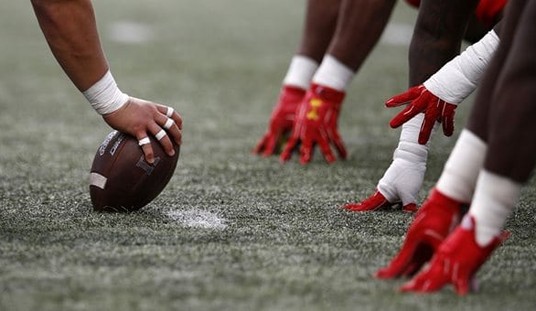(The opinions expressed by contributors are their own and do not necessarily represent the views of RedState.com.)
I recently came across an article in Billboard about Universal Music Group CEO Lucian Grainge and his call for an “updated model” for the music industry, one that’s more “innovative, artist-centric” and provides an enhanced experience for consumers. Given all of the battles over the last few years over streaming royalties and song catalogues, Grainge’s view should be an example not just for music industry executives, but for executives in all industries in which technological changes are forcing difficult discussions on royalties, copyright, and intellectual property protections.
In a New Year’s memo to employees, Grainge’s devotion to the musical art form and supporting the artists themselves is apparent, but it’s also crystal clear that Grainge isn’t very happy with recent entrants into the industry that he believes are exploiting recent growth and don’t have an artist’s long-term career in mind.
In the past, music industry conflict was often focused on ‘the majors versus the indies.’ Today, however, the real divide is between those committed to investing in artists and artist development versus those committed to gaming the system through quantity over quality.
Grainge gave the example of immersive audio as one example of innovation the company has led that has benefitted the entire industry – labels, artists, and consumers. UMG approached Dolby with the proposal to “evolve the music listening experience” seven years ago, he said, with the goal of developing a “new format that envelops the listener into a 360-degree immersive environment that provides artists with a broader creative palette on which to express themselves.” A win-win.
This advance took years of investment, Grainge described, including building new state-of-the-art recording suites in LA and London, training sound engineers how to best use the format, and educating artists and artist estates on the opportunities immersive audio would provide. And now? Grainge reports that “nearly half of UMG’s streaming consumption and 80% of our top-50 streaming artists’ music are available in immersive (or Atmos) versions” and notes that due to UMG’s efforts, “the entire industry,” including platforms like Apple Music, Tidal, and Amazon Music, “has been releasing more and more music in immersive audio.”
Grainge wants to bring that same type of disruptive thinking to the music industry, specifically streaming platforms, to benefit both the artist and the consumer (and, of course, the labels). Streaming has created “opportunities and benefits” for both artists and consumers, but the revenue structure has created some unforeseen issues, like a flooded market with some pretty questionable “music” out there. That isn’t good for top artists or for consumers. Grainge explains how this has happened:
Today, some platforms are adding 100,000 tracks per day. And with such a vast and unnavigable number of tracks flooding the platforms, consumers are increasingly being guided by algorithms to lower-quality functional content that in some cases can barely pass for “music.”
Let me explain. In order to entice consumers to subscribe, platforms naturally exploit the music of those artists who have large and passionate fan bases. But then, once those fans have subscribed, consumers are often guided by algorithms to generic music that lacks a meaningful artistic context, is less expensive for the platform to license or, in some cases, has been commissioned directly by the platform. For example, just witness the thousands and thousands of 31-second track uploads of sound files whose sole purpose is to game the system and divert royalties. The result? A less fulfilling experience for the consumer, diminished compensation flowing to artists that are driving the business models of the platforms, and fewer cultural moments that fans can collectively share, all of which undermines the creativity and development of artists and their music that the platforms were, in part, designed to foster.
It seems that the platforms just see dollar signs (nothing wrong with that) but by focusing solely on the revenue without a focus on quality content, eventually the entire industry suffers.
Contrast this with what’s happening in Washington, DC, where bureaucrats, streaming services, and trade group execs are still fighting over the LAST five years’ royalty rates, yet one trade group exec is popping the champagne over a December ruling from the Copyright Royalty Board on streaming royalty rates for songwriters that increases the headline rate a whopping .25 percent over five years. From Billboard:
Arriving just before New Years’ Eve, on Friday (Dec. 30), the Copyright Royalty Board judges issued their ruling…upholding a settlement proposed by the National Music Publishers’ Association (NMPA), Digital Media Association (DiMA), and Nashville Songwriters’ Association International (NSAI) in late August. This ruling…represents a compromise between the music industry and the streaming services, creating certainty around the royalties owed to songwriters for U.S. mechanicals.
According to the settlement, which the NMPA touts as the “highest rates in the history of digital streaming,” the headline rate will increase from 15.1% of revenue in 2023 to 15.2% in 2024 and then up a half a percentage point in each of the remaining three years, peaking at 15.35% in 2027, the final year of the term.
Rates paid by services like Spotify are calculated utilizing a complicated method, but increased by about 5.2% and the per-subscriber rate by about 37% (from .80 to $1.10). Given the rate of inflation, and that the people receiving royalties have no control over the rates charged by the streaming platforms, the increase is hardly anything for artists to be enthused about.
NMPA’s David Israelite, who was heavily involved in the settlement, admits that precisely what the settlement means in terms of revenue is undetermined, mostly because the services control the price to the consumer and advertising rates. In an interview with Creative Industries News, Israelite was asked if he had an idea of the amount of additional revenue songwriters and publishers could expect through the agreement. He replied that they are making projections, but:
It is important to see what influences that number: it will depend on what services will have in terms of subscriptions and advertising revenues, and we are also starting to see price increases, such as what we’ve seen with Apple. So it is difficult to project what it will mean once it is in place. It is very speculative…
Israelite agrees with Grainge that the industry needs reform, but sees that happening through bureaucracy and legislation.
There must be a willingness to change the system and parties must agree on what to do. So we currently are focused on reaching an agreement on how to do it, and then we will engage with Congress, like we did for the Music Modernisation Act.
So we now have a new challenge — can we create a consensus to improve the CRB process? We’ve spoken to parties about the concepts but we have not yet formulated what the changes could be. Through the settlement process with DiMA, we created a working relationship and we have proven that we can come together and make changes that are meaningful. The settlement was important to create the framework.
While Israelite doesn’t describe any particular ideas or parts of a framework, it doesn’t seem that there is an anticipation of a radical, disruptive change from whatever negotiations between the “stakeholders” in Washington, D.C. might have.
Grainge’s thoughts on the topic are similarly vague, but hold a lot more promise for innovation and intellectual property rights (as he includes creators of short-form video in his vision) while not de-emphasizing the necessary goal of “monetizing fandom.”
Therefore, to correct this imbalance, we need an updated model…a model that supports all artists — DIY, indie and major. An innovative, “artist-centric” model that values all subscribers and rewards the music they love. A model that will be a win for artists, fans and labels alike, and, at the same time, also enhances the value proposition of the platforms themselves, accelerating subscriber growth, and better monetizing fandom.
This year, we will be working on the innovation that is absolutely essential to promote a healthier, more competitive music ecosystem, one in which great music, no matter where it’s from, is easily and clearly accessible for fans to discover and enjoy. An environment where great music is not drowned in an ocean of noise. And one where the creators of all music content, whether in the form of audio or short-form video are fairly compensated.
Sign me up for Grainge’s vision of the future of the music industry.














Join the conversation as a VIP Member